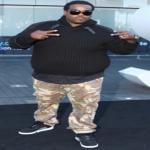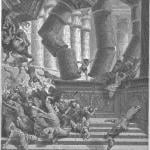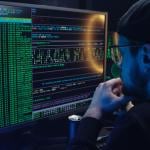
(Wikimedia Commons public domain)
From a well-respected Dutch cardiologist:
It is 1969. At the coronary care unit the alarm suddenly goes off. The monitor shows that the electrocardiogram of a patient with a myocardial infarction (heart attack) has flatlined. The man has suffered a cardiac arrest. Two nurses hurry over to the patient, who is no longer responsive, and quickly draw the curtains around his bed. One of the nurses starts CPR while the other places a mask over his mouth and administers oxygen. A third nurse rushes over with the resuscitation trolley that contains the defibrillator. The defibrillator is charged, the paddles are covered in gel, the patient’s chest is bared, the medical staff let go of the patient and the bed, and the patient is defibrillated. He receives an electric shock to the chest. It has no effect. Heart massage and artificial respiration are resumed, and, in consultation with the doctor, extra medication is injected into the IV drip. Then the patient is defibrillated for the second time. This time his cardiac rhythm is reestablished, and more than a minute later, after a spell of unconsciousness that lasted about four minutes, the patient regains consciousness, to the great relief of the nursing staff and the attendant doctor.
That attendant doctor was me. I had started my cardiology training that year.
Following the successful resuscitation, everybody was pleased — everybody except the patient. He had been successfully revived, yet to everybody’s surprise he was extremely disappointed. He spoke of a tunnel, colors, a light, a beautiful landscape, and music. He was extremely emotional. The term near-death experience (NDE) did not yet exist, and I had never heard of people remembering the period of their cardiac arrest While studying for my degree, I had learned that such a thing is in fact impossible: being unconscious means being unaware — and the same applies to people suffering a cardiac arrest or patients in a coma. At such a moment it is simply impossible to be conscious or to have memories because all brain function has ceased. In the event of a cardiac arrest, a patient is unconscious, is no longer breathing, and has no palpable pulse or blood pressure.
Pim van Lommel, Consciousness Beyond Life: The Science of the Near-Death Experience (New York: HarperCollins, 2010), v-vi.
Significantly, the epigram to the Introduction to Dr. Van Lommel’s book — an epigram that immediately precedes the passage cited above, reads as follows:
All science is empirical science, all theory is subordinate to perception; a single fact can overturn an entire system. — Frederik van Eeden
***
It’s Friday. So it shouldn’t be a surprise that Interpreter: A Journal of Mormon Scripture has published a new article today:
“Two New Studies of Biblical Repentance”
Have you, by the way, noticed the list, to the right side of the article, of the various formats in which it’s available? You can listen to an audio recording of it, for example. In other words, you can enjoy Interpreter while you’re walking on your treadmill or driving in your car. And what could possibly be more wonderful than that?
***
Have you ever wondered what Mary Magdalene might have looked like? Well, here’s a stab at it:
“Is This the Face of Mary Magdalene?”
Of course, the most fundamental question concerns whether that’s her skull in the first place.
***
Yesterday, I looked in on an amusing discussion the Church’s responsibility for the unusually high levels of obesity among Latter-day Saints. In that light, this list is certainly worth a look:
“The Most and Least Obese States in America — Ranked!”
***
A nice little essay from Stephen Smoot:
“Jesus, the Alt-Right, and Latter-day Publicans”











